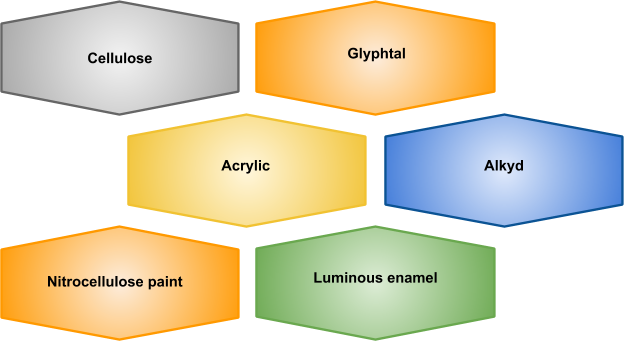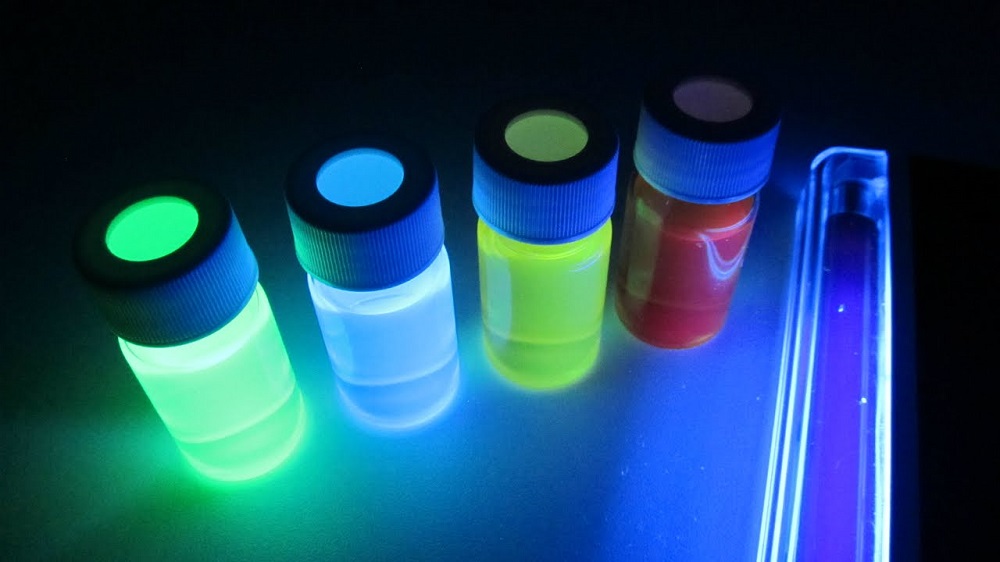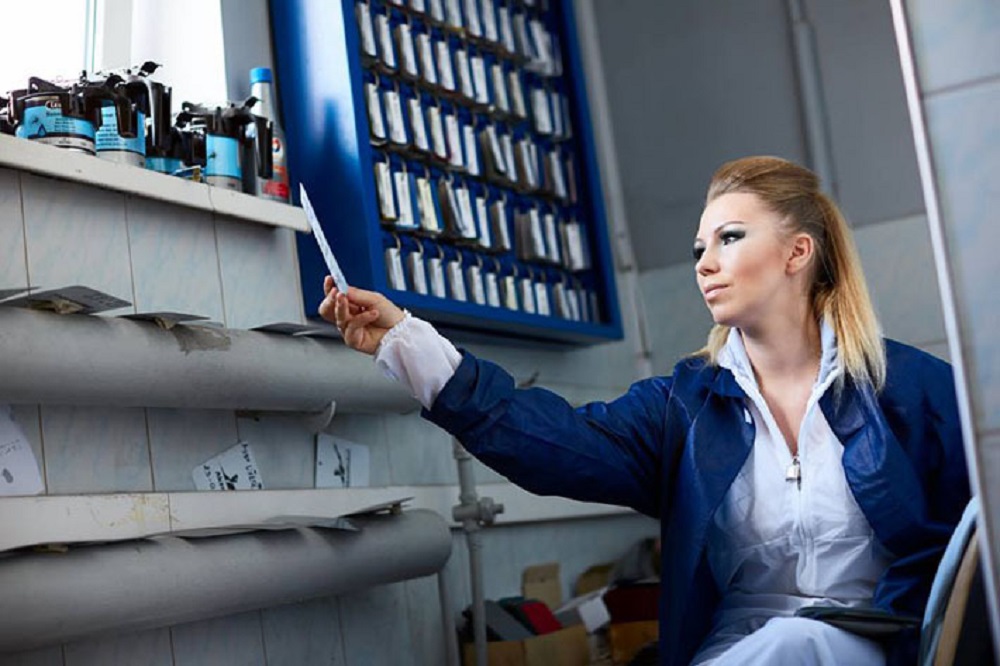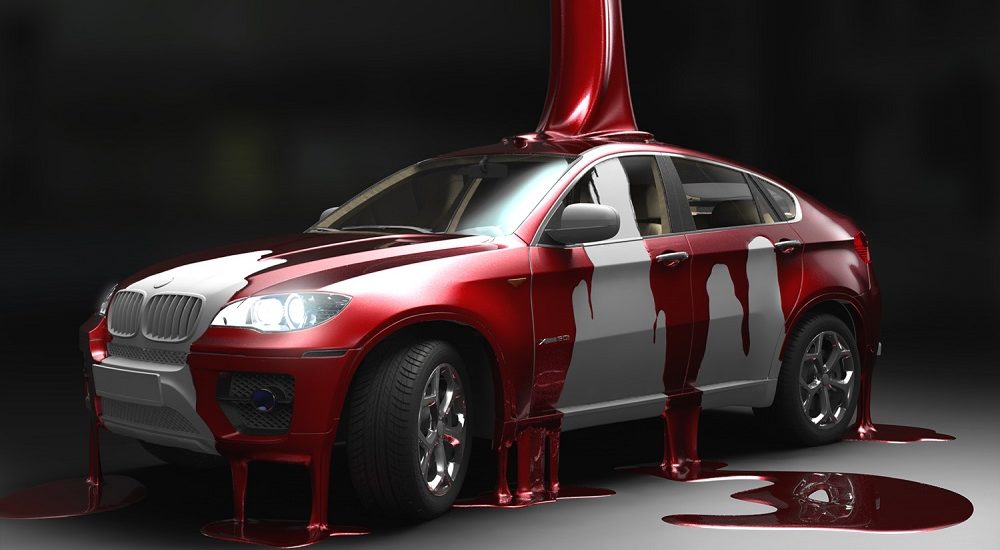Today, the typology of car paints and enamels is of great interest to car owners and automakers. The durability of the body protection, the individual aesthetic perception of the car, its originality and uniqueness, and even the accident rate depend on which paint and varnish coating is chosen.
How to navigate in types of car paints
All car enamels can be divided by color, composition and effects. If the situation with a color is more or less clear (the color palette is almost limitless), the classification of car enamels according to their composition is rather complicated:

The paint, which is called cellulose, is widely used in the automotive industry. It is cellulose paint that contains nitrosolvent, able to quickly evaporate at ordinary ambient temperatures. After the surface is covered with such a paint, it dries very quickly, because the paint layer is ultra-thin. But a qualitative result can be obtained only after multi-layered coloring with thorough drying of each layer. In addition, the cellulose coating quickly loses brightness and needs additional polishing, as it doesn’t shine initially. There is also a fire hazard, as the cellulose paint has a low ignition temperature.
Acrylic (polyurethane) paint has excellent adhesive and coloring properties. At the same time, it is relatively inexpensive. The required result is achieved as quickly and effectively as possible. After applying, the acrylic paint creates a durable, uniform and glossy coating. After drying, the surfaces painted with acrylics acquire high resistance to mechanical damage and aggressive environmental influences. In order to get the maximum effect from acrylic, it is necessary to apply the dye in two or three layers with drying in between. Acrylic coating can be matte. But acrylic paint is two-component and is available in two containers separately. There is component A (acrylic copolymer solution) in one of the containers, a hardener – in the other. When they are mixed, the polymerization process, the formation of a polyurethane acrylic film, is started, and this is a controlled chemical reaction. When the air temperature is 20°C and there is normal humidity, all irreversible changes in acrylic materials are completed in 16-18 hours, and within a few more days the coating gains maximum hardness. At a temperature of 60°C, the coating is fully polymerized in 40-60 minutes, after which the car is ready for polishing and giving it back to the client. The finished film of acrylic enamel has a high hardness (close to the hardness of glass), resistant gloss, excellent elasticity and durability. Acrylics are resistant to acids, alkalis and solvents, have excellent adhesion to a wide variety of surfaces, withstand the effects of solar ultraviolet radiation and precipitation.
Alkyd car enamel is the best ratio of quality and price. A feature of this type of enamel is its rapid polymerization without creating additional conditions (that is, at normal temperature, under the effect of atmospheric oxygen). The main advantage is simplicity of application, good coverage (the old coating will be easily painted with new one), resistance to various kinds of effects, both mechanical and chemical. The disadvantage: alkyd paints dry for a long time. A film, which significantly slows down the hardening of the inner layer, is immediately formed on the surface. This problem is solved by increasing the temperature in the room. Special accelerators are also added to the enamel. Alkyd car enamel is a derivative of an oily alkyd resin, a product of the interaction of polyatomic alcohols and polybasic acids. Such enamel is used very rarely for a complete painting of a car, as it requires additional varnish and polishing. Aerosol alkyd enamel has become most frequently used, since this form of paint application is a good analogue of use in local work instead of special equipment (spray-gun or airbrush). Aerosol enamel is sprayed onto the surface in a very thin layer, due to which it quickly polymerizes and dries.
Glyphthal are common alkyd resins. Glyphthal paints create a thicker film on the surface of the car body. The final coating doesn’t require polishing. But these advantages are reduced to nothing due to the long period of paint’s drying. At temperatures of 20-25 degrees, the coating hardens only after 24 hours, and sensitivity to solvents and mechanical impact is lost only after 15-30 days. Glyphthal paints are based on glyphthal resins obtained by the interaction of glycerin (trihydric alcohol), phthalic anhydride and vegetable oil.
Melamine-alkyd paint (“synthetic”) is also a type of alkyd enamel. It is widely used in factory conditions, since it is not difficult to create the necessary work conditions in a specialized enterprise, because this car paint requires a high temperature for solidification: it dries when heated from 110 to 130°C. Melamine-alkyd enamels are also called “hot-dried enamels”. But the undoubted advantage of melamine-alkyd enamel is the richness of color range, including the addition of gloss with different effects (metallic, nacre or without it – matte enamel).
Nitrocellulose paint is used to hide minor defects on bodies of cars, trucks and other equipment. Nitrocellulose enamel (NC) dries very quickly, but its resistance to atmospheric influences is low. Therefore, after painting, it is recommended to coat the surface with an additional varnish.
Luminous enamel contains a luminophor. It allows to achieve a decorative effect of glow in the dark. The paint with luminophor looks transparent in the daytime, the coating simply shines, and in the dark it creates the effect of a very bright glow. During the day, the pigment absorb the light from the sun’s rays, and then emits it for 6-12 hours. Among the advantages of luminous enamels are resistance to moisture, low temperatures and chemicals, as well as protection against aggressive effects. You can choose the luminous enamel yourself and make your car not look like the others.

Methods of applying enamels and paints
There are various ways of applying car paint to the car surface:
- Using special equipment. As the equipment for applying enamel, spray-gun (for large volumes of work) or airbrush (for covering small areas or drawing pictures) are used.
- Without the use of equipment.
Often the car owner doesn’t have the necessary painting equipment, or the painting area is so small that its use is impractical. Manufacturers of car paint took into account this moment and set up the production of enamel in various containers. Among the latter, aerosols and pens are widely known.
Spray paint is very convenient to use, as its application to a carefully prepared car surface doesn’t cause any difficulties. The enamel lays well, but in order to prevent the formation of smudges, one should follow the manufacturer’s instructions and spray the product from the optimum distance to the surface. Most often, acrylic and alkyd car enamels are packaged in such a container.
Pen is a very convenient tool for painting small chips or scratches. Car owners appreciate such a container, since a pen can be used immediately after caused damage (or if it is found), without waiting for returning to the garage. The only problem is that owners of cars with rare colors will have to work hard to find a pen with the necessary enamel.
As for the reviews of people who use pen in practice, they all recommend using such a container when masking small defects – then the pen most effectively copes with its task. If the damage is large, the pen won’t work.

A huge variety of car paints and ways of their application doesn’t relieve car owners from the need to have documentary evidence of the right to drive a car. Therefore, if you don’t have an international driver’s license, hurry to get it. You can process a world-class driver’s license right on our website.

Published March 29, 2019 • 6m to read






